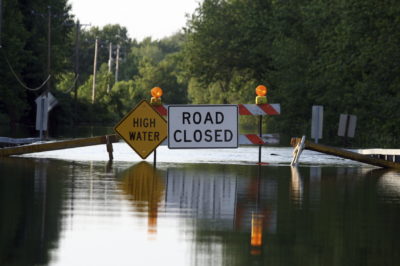Flooding is one of the most common and costly natural disasters—resulting in billions of dollars in cleanup costs each year. In many parts of the United States, the risks of flood-related damage appear to be rising.
According to the Union of Concerned Scientists’ flooding dangers report, coastal population growth and development is taking place at the same time as an accelerating rise in sea level, more intense hurricanes and bigger, more damaging storm surges. Many coastal communities have seen large oceanfront development in recent years, even though they are particularly at risk for floods. But risks are also climbing in landlocked communities with lakes, rivers, streams and other bodies of water, as well as those prone to bad weather.
“As communities grapple with the new realities, they also need a more comprehensive framework to assess true risks and vulnerabilities, as well as a set of tools to help them make the best choices for protecting themselves,” the group said.
A 2013 report by the Federal Emergency Management Agency (FEMA) forecasts that rising sea levels and increasingly severe weather would increase the number of areas at risk for flooding in the United States by 45 percent by 2100.
Here’s a look at some of the main reasons floods are becoming a higher risk:
More people—and development
As the U.S. population grows and communities build more infrastructure to support that growth, there are less areas for rainfall and storm runoff to drain. The water eventually spills onto roads, parking lots and backyards and ultimately finds its way into basements, causing major flood damage to homes.
“As cities, towns, and suburbs have developed to accommodate increasing population, more impermeable surfaces (roads, roofs, parking lots, driveways, alleys, sidewalks, and patios) have led to increased stormwater runoff, and natural drainage systems have been replaced with man-made sewer and stormwater infrastructure,” writes the Center for Neighborhood Technology (CNT).
“This infrastructure has fallen into disrepair in many places, and increasingly heavy rainfall events are putting additional strain on the deteriorating drainage systems.” For example, a 2013 report by the CNT found that many homeowners in the Cook County area of Chicago had experienced multiple flooding incidences or “wet basements” within the past five years. And this is the city that has spent billions of dollars since the 1970s on its massive Deep Tunnel Project to divert stormwater and sewage into huge temporary holding reservoirs.
Coastal waters rising
Today’s sea level is expected to rise by about two feet by 2100. This would place more than $1 trillion-worth of property in the United States—about half in Florida—at risk of being flooded, according to the Union of Concerned Scientists.
The rising sea level contributes to shoreline degradation and erosion, and increases flooding risks from especially high tides, according to the Union of Concerned Scientists. Storm surges, rising water associated with low pressure weather systems, are becoming increasingly dangerous as the sea level continues to increase, and can reach low-lying lands that have been historically dry. States such as California, Florida, Louisiana, North Carolina, South Carolina are particularly vulnerable because they have large areas of low-lying land.
More intense weather
Extreme weather—and an increase in the prevalence and severity of severe storm systems such as hurricanes and tornadoes—is also contributing to more flooding. Major snowstorms and blizzards in the northeastern United States early in 2015 left much of the region with large snowmelt. Tropical storms and hurricanes have flooded towns across the eastern seaboard. And flash floods and other torrential rains have flooded cities across the nation.
Between 1958 and 2011, the Northeast saw an increase of 74% in the amount of rain falling during extreme events, and the South saw an increase of 26%, according to the Union of Concerned Scientists. In fact, South Carolina experienced more than $1 billion in damages due to flooding in September 2015, when multiple dams failed amid rainfall that surpassed 2 feet in some places.
A recent study by several universities found that the flood risk for New York City and New Jersey has grown significantly over the past 1,000 years due to an increased number of hurricanes accompanied by storm surge. Hurricanes are more destructive than ever, from Katrina and Rita hitting the Gulf Coast in 2005 to Sandy landing in New Jersey in 2012. “A storm that occurred once in seven generations is now occurring twice in a generation,” Benjamin Horton, a marine and coastal sciences professor at Rutgers University, said in a news release about the study.
Flooding is more of a concern than ever before. And just because you live in an area that hasn’t experienced a flood in recent history doesn’t mean that you are free from danger; flooding is becoming more frequent, severe and widespread. Thus, it is important to ensure that you are doing as much as possible to protect your property from flooding, and to protect yourself financially if a flood should occur.
Don’t wait until it’s too late! The Hartford offers National Flood Insurance Program coverage to AARP members. Learn more or get a quote today!






